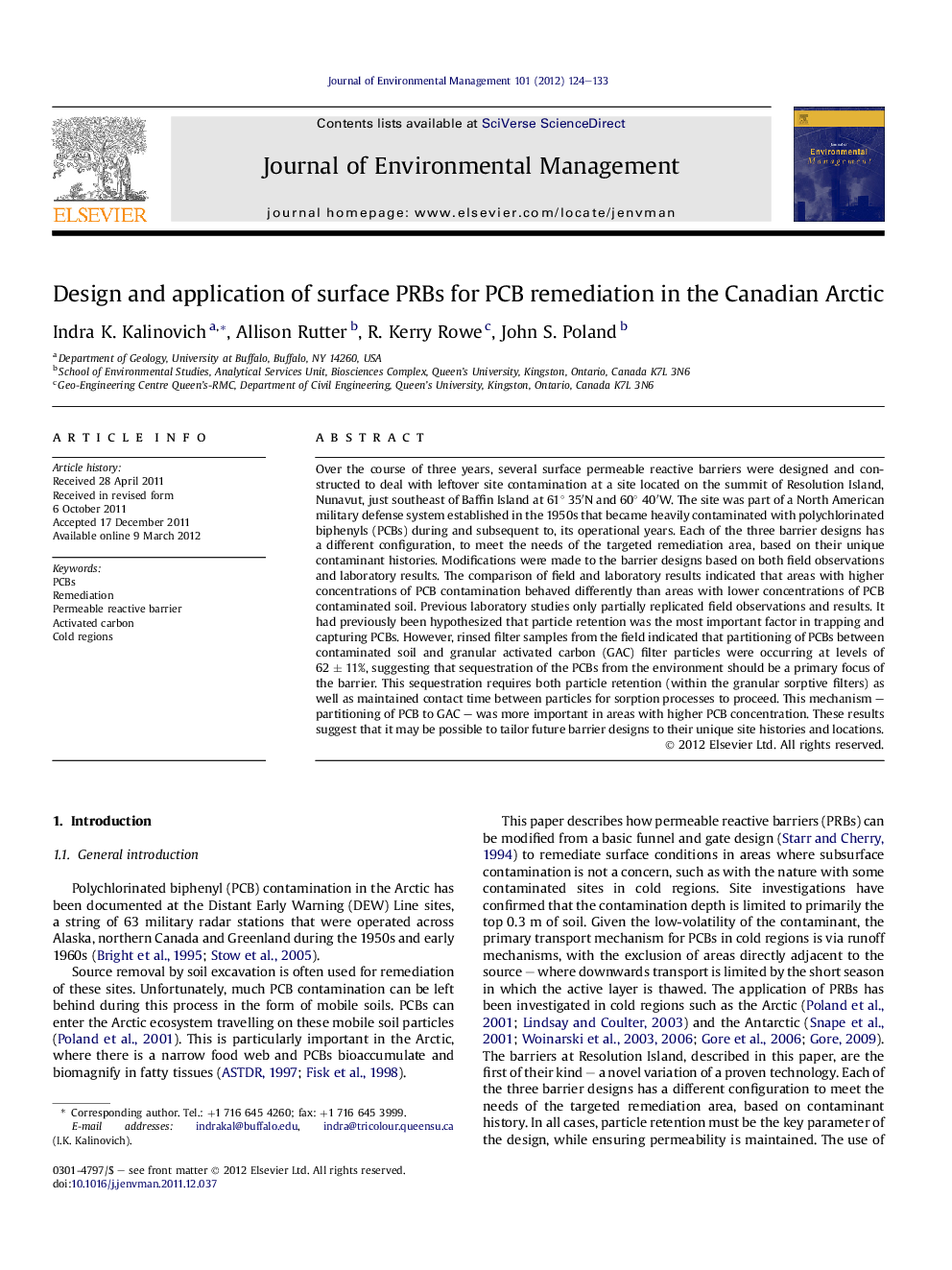| کد مقاله | کد نشریه | سال انتشار | مقاله انگلیسی | نسخه تمام متن |
|---|---|---|---|---|
| 1056844 | 1485311 | 2012 | 10 صفحه PDF | دانلود رایگان |

Over the course of three years, several surface permeable reactive barriers were designed and constructed to deal with leftover site contamination at a site located on the summit of Resolution Island, Nunavut, just southeast of Baffin Island at 61° 35′N and 60° 40′W. The site was part of a North American military defense system established in the 1950s that became heavily contaminated with polychlorinated biphenyls (PCBs) during and subsequent to, its operational years. Each of the three barrier designs has a different configuration, to meet the needs of the targeted remediation area, based on their unique contaminant histories. Modifications were made to the barrier designs based on both field observations and laboratory results. The comparison of field and laboratory results indicated that areas with higher concentrations of PCB contamination behaved differently than areas with lower concentrations of PCB contaminated soil. Previous laboratory studies only partially replicated field observations and results. It had previously been hypothesized that particle retention was the most important factor in trapping and capturing PCBs. However, rinsed filter samples from the field indicated that partitioning of PCBs between contaminated soil and granular activated carbon (GAC) filter particles were occurring at levels of 62 ± 11%, suggesting that sequestration of the PCBs from the environment should be a primary focus of the barrier. This sequestration requires both particle retention (within the granular sorptive filters) as well as maintained contact time between particles for sorption processes to proceed. This mechanism – partitioning of PCB to GAC – was more important in areas with higher PCB concentration. These results suggest that it may be possible to tailor future barrier designs to their unique site histories and locations.
► We describe the design and modification of three surface PRBs used to remediate PCBs.
► The barrier configuration took into account the site's history of contamination and remediation.
► Our laboratory results provide insight into how PRB efficacy can be improved.
► Particle retention is particularly critical in treating highly hydrophobic compounds.
► Efficacy is greatest when PRB designs consider both particle retention and sorption.
Journal: Journal of Environmental Management - Volume 101, 30 June 2012, Pages 124–133